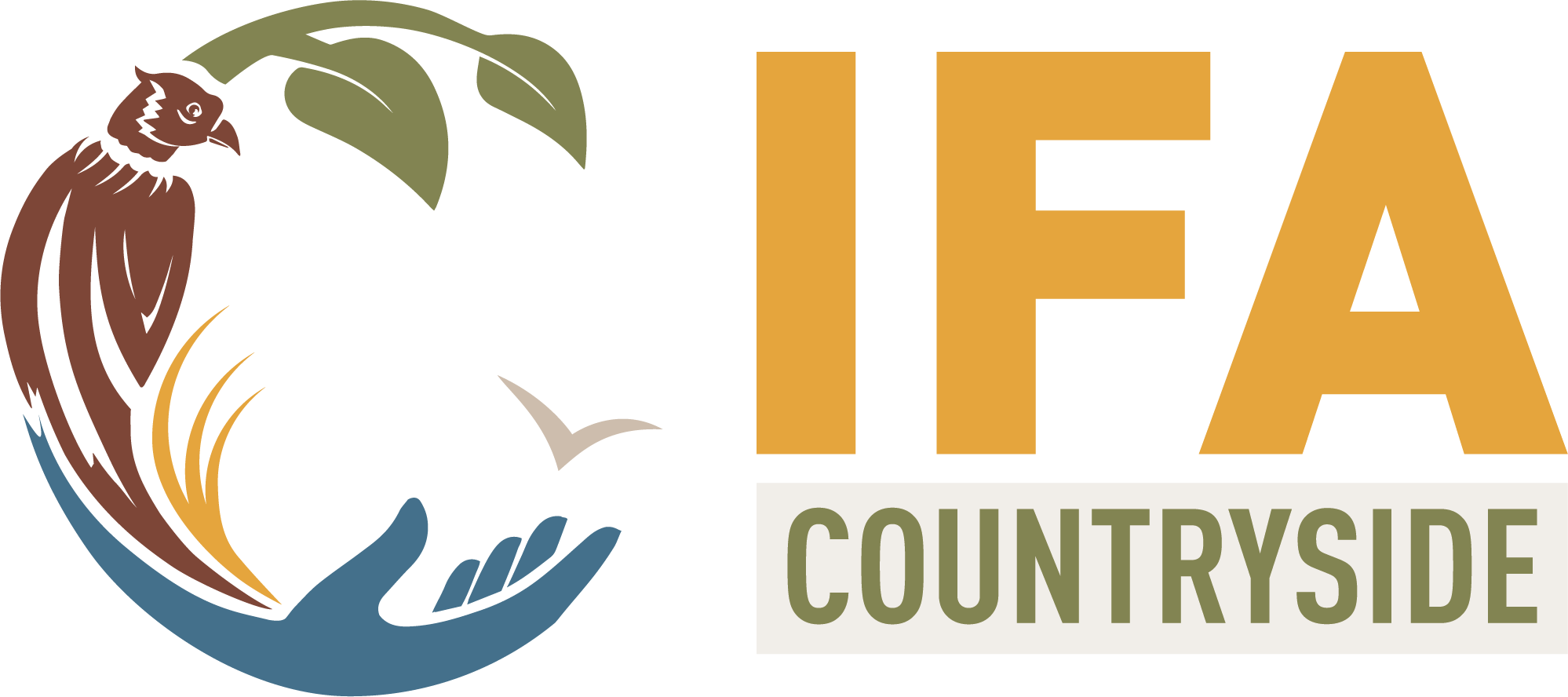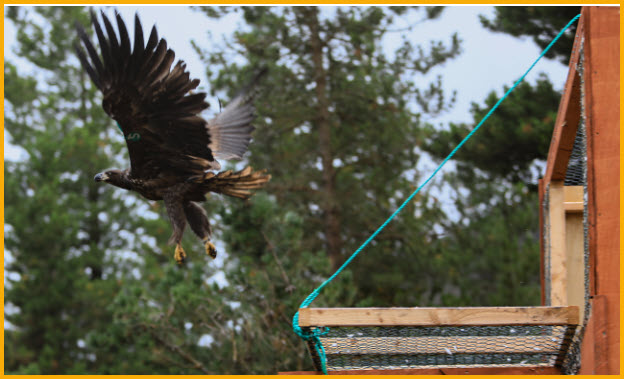Tanaiste Micheal Martin TD and Minister of State for Heritage, Malcolm Noonan TD, have expressed shock and disappointment at the poisoning of two young white-tailed eagles in Northern Ireland.
The two eagles, re-introduced in recent years by the National Parks and Wildlife Service of the Department of Housing, Local Government and Heritage, were found dead on a hill farm in the Glenhead Road area of Ballymena, Co. Antrim on the 15th May. The cause of death was only confirmed in the last few days by the Police Service for Northern Ireland (PSNI).
One of the birds had been released by the then Taoiseach Micheál Martin in August 2022 on the Shannon Estuary as part the by NPWS white-tailed Eagle reintroduction programme.
After learning of the death of the eagles, Tánaiste Micheál Martin said:
“I am deeply saddened and shocked to learn of the death of the white-tailed eagles. I have closely followed the reintroduction programme for a number of years and to be involved in the release of the seven young eagles in 2022 was an experience that I will never forget.
“These are an iconic species, and the work of the NPWS in reintroducing them is something I, and the Government, am proud to support. There have been great successes in the programme over recent years, so to learn of a poisoning like this is very disappointing.”
The Minister of State for Heritage and Electoral Reform, Malcolm Noonan TD, said:
“Like everyone who is captivated by the sight of these magnificent birds in our skies again, I am appalled at what appears to be a poisoning incident that has led to the death of two white- tailed eagles. It has been encouraging in recent years to see birds nesting and rearing young hatched eagles here for the first time in over 100 years. An incident like this sets back our ambition but we won’t be deterred. Whatever misunderstanding that is out there needs to be challenged. Toxic substances such as carbofurans are banned and need to be handed over for safe disposal. NPWS will work with colleagues in Northern Ireland, An Garda Siochana and the PSNI to fully investigate this incident and hopefully secure a successful prosecution. Wildlife crime is wrong at any time but in a time of a biodiversity crisis it is socially abhorrent and I would urge anyone with information relating to this incident, to speak to the PSNI.”
Director General of the NPWS Niall Ó ’Donnchú added:
“I was very saddened to hear of the poisonings. White-tailed eagles are beautiful and rare birds, and while we are in the midst of a successful reintroduction programme, these setbacks truly matter.
The deliberate poisoning of birds of prey is a heinous crime against nature and an offence under the Wildlife Acts. These birds have no means of detecting that they have been baited and the malice of forethought in these acts doesn’t bear thinking about.”
One of the young white-tailed eagles, found dead had been brought in as a chick in 2022 from Norway under phase two of the white-tailed eagle re-introduction programme managed by NPWS. He was fitted with a satellite tag so his movements could be followed. After being released, the young eagle spent a number of months on the Shannon Estuary before starting to travel around the country. He crossed into Northern Ireland from south Donegal on the 1st May 2023 and was found dead just two weeks later, alongside an untagged young eagle. The origin of the second dead eagle is unknown, but NPWS staff believe it most likely fledged from a nest in Munster in 2021.
Investigations by the PSNI recently revealed that both young eagles had died as a result of ingesting an insecticide called Bendiocarb. It is not known how the eagles ingested this substance, but it was possibly from eating carrion (a dead animal) or other bait laced with the insecticide. According to the substance classification and labelling approved by the European Union, Bendiocarb is fatal if swallowed, is toxic in contact with skin and is toxic if inhaled. It is acutely toxic to many animals, particularly to birds, fish and some invertebrates such as bees and earthworms. Its use has been illegal in Scotland since 2005.
Despite their toxicity, Bendiocarb, Carbofuran and other poisons continue to be used to target wildlife. Earlier this year a white-tailed eagle was found poisoned by the illegal insecticide Carbofuran in Co Cavan.
White-tailed eagles are a protected species under the Wildlife Act. These birds were persecuted to extinction by the early 1900s but are making a successful comeback due the NPWS reintroduction programme started in 2007. Although some landowners may have in the past commonly used poisons to deliberately control crows and foxes, especially around lambing time, NPWS would like to issue a reminder that use of poisonous substances for the control of foxes and crows is illegal and has been since 2010.
The potential for positive economic benefits from the re-introduction of the eagles has been demonstrated in Mountshannon, Co. Clare, when the first breeding pair in Ireland in over a century nested within sight of the village in 2012, attracting thousands of visitors over the following years. Sadly one the Mountshannon pair of eagles died of avian Influenza in 2018. However there is good news from Mountshannon as the widowed male has paired up with a female released in 2020. The pair hatched two chicks this spring and they are due to fly the nest later this month. Last week the two chicks were ringed and one was fitted with a satellite transmitter.
Since 2020, almost all chicks released by the white-tailed eagle project are satellite-tagged, which enables the project to follow their movements as they disperse and establish in new areas and, in cases like this, to determine the locations of any tagged birds which may be in trouble.
ENDS
Further Information / Notes for Editors
Link to PSNI Press release: Police investigate poisoning of two white-tailed eagles
Further information on NPWS work protecting raptors at: https://www.npws.ie/research-projects/animal-species/birds/raptors-and-owls
Working together, the National Parks & Wildlife Service (NPWS), Regional Veterinary Laboratories (DAFM), and the State Laboratory introduced a formal protocol for investigating Irish bird of prey deaths in 2011. This is known as the RAPTOR (Recording and Addressing Persecution and Threats to Our Raptors) protocol.
Further information on Phase 2 of the NPWS White-tailed Eagle project can be found at:
and more general information, please use this link https://www.glengarriffnaturereserve.ie/white-tailed-sea-eagle-facts/
Background: White-tailed Sea Eagles and poisoning
The white-tailed sea eagle reintroduction programme began in 2007. The first eagle mortality of the project was recorded in November 2007 when a female recovered within Killarney National Park was found to have died due to poisoning. Between 2007 and 2015, poisoning was confirmed in 14 white-tailed eagles. This equated to 64% of mortalities where the cause of death could be determined. Poisons identified in the 14 poisoning incidents were Carbofuran (n = 4), Nitroxynil (n = 7), Alphachloralose (n = 2) and Bromadiolone (n = 1).
White-tailed eagles are opportunistic feeders and will avail of carrion which makes them vulnerable to poisoned bait. For example, a single poisoned carcass was implicated in the death of three eagles in Co Kerry in 2010.
In 2010, the laying of poison meat bait was banned via Statutory Instrument No. 481 of 2010, Restrictions on the Use of Poison Bait Regulations.
Some poisoning cases continued after 2010. However the 2022 case of the young male eagle poisoned by the illegal pesticide Carbofuran in Co Cavan was the first such confirmed case since 2015.
Note: Lead poisoning – A bird picked up alive in 2017 had ingested lead shot and was rehabilitated. It subsequently died of HPAI in 2018. A bird picked up alive in Feb 2021 with suspected lead poisoning was rehabilitated, and re-released into the wild.

